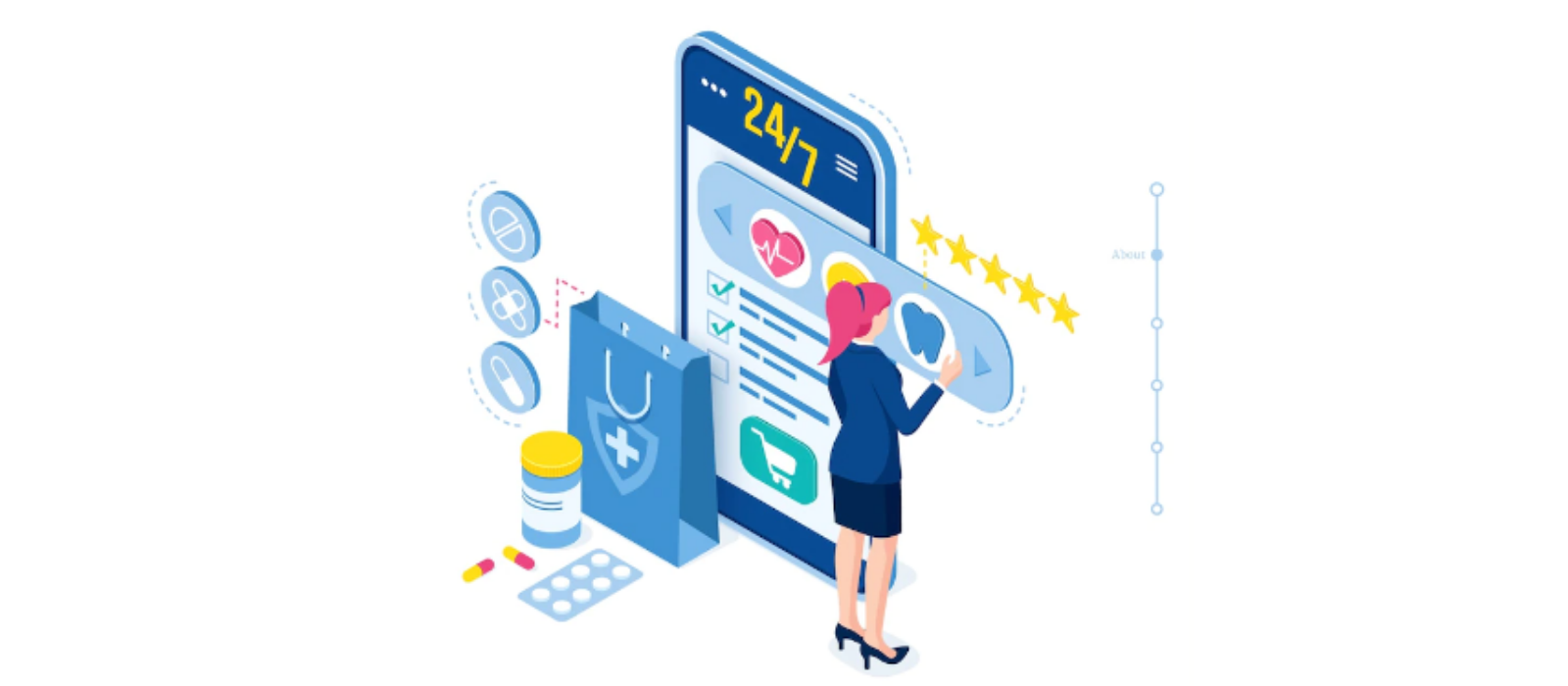Diagnosing ailment, utilizing wearables and ingestible sensors, every one of these tackles the force of portable apps to work on understanding treatment. Since we have entered the advanced time, we have become more appended to our savvy gadgets.
Our cell phones have become such a fundamental piece of our lives that we depend on them to deal with our timetables, sort out our work and business processes, remain educated and associated through informal organizations, book medical and healthcare checkups, and so forth?
Advancement in healthcare has driven application improvement to become both a need and an extravagance.
Simulated intelligence Powered Healthcare Apps and Consumers
As indicated by reports (Accenture), the quantity of healthcare purchasers embracing computerized innovation is expanding consistently.
According to 75% of US consumers polled, innovation is vital to dealing with their well-being. Patients are available to shrewd advances that can further develop the taking care of oneself cycle.
Patients love self-administration advanced well-being devices that go past sites. Seventy-four percent of those who met a virtual medical care administration were very satisfied. What might Healthcare Mobile App Development Do for Healthcare Professionals? The primary way that a versatile application can help a specialist or a healthcare proficient is by saving time.
Innovation has made the existence of specialists a lot simpler and more coordinated. A specialist’s life is occupied and tedious, and they have very little available energy to arrange their work, so innovation proves beneficial for them here.
Also, portable apps have made it conceivable. This way, versatile apps are becoming progressively significant for specialists, medical clinics, and healthcare experts. The advantages of healthcare apps for healthcare proficiency are various

Medical services experts presently use cell phones or tablet PCs for capacities they used to require a pager, cellphone, and PDA to accomplish.
Smartphones and tablets join both registering and correspondence highlights in a solitary gadget that can be held in hand or put away in a pocket, permitting simple access and use at the place of care.
Notwithstanding voice and message, new cell phone models offer further developed highlights, for example, web looking, worldwide situating frameworks (GPS), excellent cameras, and sound recorders.
With these elements, solid processers and working frameworks, enormous recollections, and high-goal screens, cell phones have become handheld computers.
The primary cell phone that integrated both correspondences and figuring highlights was the Blackberry, presented in 2002. Following the presentation of the Blackberry, several portable mobile phones were shown.
Perhaps most notably, Apple released the initial iPhone in January 2007.
Cell phones
Cell phones that use the Google Android operating platform were introduced in October 2008. Because of the intuitive touch-screen UIs and progressed elements and abilities that the iPhone and Android cell phones offer, responsibility for gadgets has expanded quickly.
In April 2010, Apple presented another development, the iPad tablet PC, which was one more extraordinary processing apparatus on account of usability, movability, and a nearly colossal screen. The iPad lighted the tablet PC market.
Tablets
Tablets that run the Google Android working framework (Samsung Galaxy and others) were sent off sometime after that, utilizing these cell phones much more broadly for feasible well-being frameworks that put individuals first.
The COVID-19 emergency has impacted more than 188 nations and locales worldwide, causing an enormous scope death toll and extreme human anguish. The emergency represents a significant danger to the worldwide economy, with drops in movement, business, and utilization more regrettable than during the 2008 monetary emergency.
Conclusion:
In the beginning, a more prominent interest in populace well-being would make individuals, especially weak populace gatherings, stronger well-being chances.
The well-being and financial outcomes of the infection are felt all the more intensely among impeded populaces, extending a social texture previously tested by high degrees of disparities.
The emergency exhibits the outcomes of unfortunate interest intending to more extensive social determinants of well-being, including destitution, low schooling and undesirable ways of life.
Despite much discussion of the significance of well-being advancement, scarcely 3% of total well-being spending is committed to counteraction even across the more extravagant OECD nations.
Building strength for populaces requires a more prominent spotlight on fortitude and rearrangement in friendly assurance frameworks to address hidden primary imbalances and neediness.
No comments:
Post a Comment